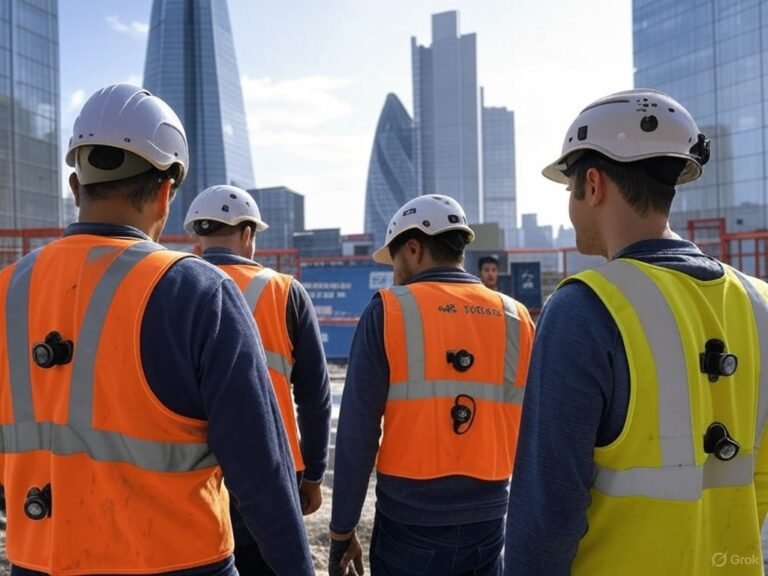SAFETY In 2025 : A high stakes revolution

London’s construction industry in 2025 is embracing significant advancements to enhance worker safety and well-being. From regulatory changes to technological innovations, the sector is evolving to meet new challenges that require attention and adaptation.
Building Safety Act 2022: Strengthening Regulations
In response to the Grenfell Tower tragedy, the UK implemented the Building Safety Act 2022, introducing stringent regulations for high-risk buildings. These include mandatory approvals at various stages of construction to ensure safety compliance. The act’s intent is not only to prevent future tragedies but also to enhance overall safety culture within the construction industry.
However, delays in approvals have been reported due to resource constraints at the Building Safety Regulator. This has raised concerns among construction firms about compliance timelines and project management. Stakeholders are encouraged to engage with the regulator and collaborate on best practices to mitigate these delays while adhering to the new guidelines.
Wearable Technology Enhancing On-Site Safety
Wearable devices, such as smart helmets and vests, are becoming standard on construction sites. These technologies monitor workers’ health metrics, detect fatigue, and alert supervisors to potential hazards in real-time, significantly reducing the risk of accidents. For example, smart helmets equipped with augmented reality can provide real-time data and guidance directly to the worker’s line of sight, improving decision-making on-site.
Additionally, the integration of wearables with centralized safety management systems allows for data analytics that can identify trends in worker health and safety incidents, enabling proactive measures to be taken before issues arise.
Prioritizing Mental Health in the Workplace
Recognizing the importance of mental well-being, the construction industry is implementing initiatives like mental health first aid training and stress management programs. These efforts aim to create a supportive work environment and address the industry’s high suicide rates. Furthermore, companies are beginning to foster open conversations about mental health, encouraging workers to seek help without stigma.
By promoting wellness programs and providing resources such as counseling services, the construction industry can improve overall morale and productivity on sites, leading to a safer and more engaged workforce.
Virtual Reality (VR) Training: A Safer Approach
VR training programs are revolutionizing safety education by allowing workers to experience hazardous scenarios in a controlled environment. This immersive training enhances preparedness and reduces the likelihood of accidents on-site. For instance, VR can simulate falls from heights or equipment malfunctions, giving workers a realistic sense of urgency and the opportunity to practice their responses.
Furthermore, VR training can be tailored to specific site conditions, ensuring that training is relevant and comprehensive. As technology advances, the potential for VR to provide continual skill refreshers and updates on safety protocols becomes increasingly valuable.
Ongoing Challenges
Despite these advancements, the industry faces ongoing challenges:
- Labour Shortages: An estimated 251,500 additional workers will be needed by 2028 to meet demand. This shortage not only affects productivity but also places additional strain on existing workers, which can lead to burnout and safety incidents.
- Economic Pressures: Rising costs and interest rates may lead to cost-cutting measures that compromise safety. Construction firms must balance financial viability with the imperative to maintain high safety standards, often resulting in difficult decisions.
- Regulatory Delays: Understaffing at the BSR has led to delays in project approvals, impacting timelines and budgets. As projects stall, the financial burden can lead to a decreased focus on safety as companies struggle to remain solvent.
Addressing these challenges requires continued investment in safety, training, and workforce development. A collaborative approach involving government, industry leaders, and workers themselves will be essential to overcoming these obstacles.
London’s construction industry in 2025 is at a crossroads, balancing innovation with the imperative of safety. By embracing new technologies, adhering to stringent regulations, and prioritizing mental health, the sector can build a safer and more resilient future. The path forward will demand commitment from all stakeholders, ensuring that safety remains paramount in the pursuit of progress.

